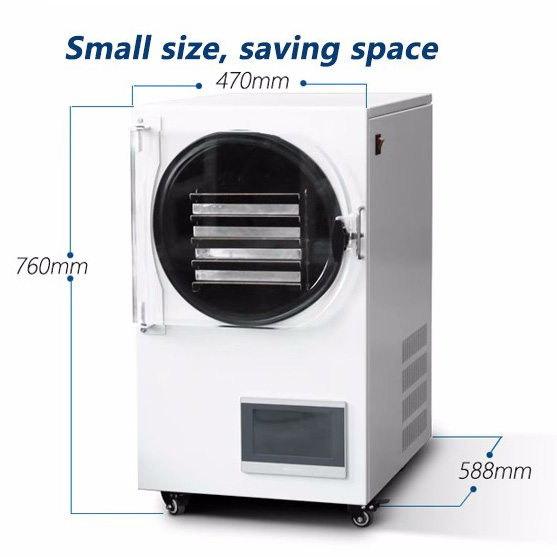Introduction to Freeze-Dried Food
Freeze-dried food, also known as vacuum freeze-dried food, includes various categories: vegetables, fruits, meat and poultry, aquatic products, convenience foods, soup and beverage ingredients, seasonings, health foods, pet foods, industrial raw materials, and other products. By rapidly lowering the temperature of the food below the freezing point, the small ice crystals formed do not severely damage the food cells, thereby preserving the food’s nutrients and taste while also extending its shelf life. Compared to other drying techniques, freeze-dried food has superior quality and can meet consumers’ year-round demand for seasonal products.

Freeze-Dried Food Processing
The processing of freeze-dried food is complex, typically involving 18 steps. It begins with rapid freezing at -38°C for 6 to 8 hours, followed by dehydration drying in a freeze-drying chamber for 20 hours. The entire process from raw material to finished product takes more than 24 hours.
Industry Development Status
In the past five years, China’s freeze-dried food industry has developed rapidly. Freeze-dried durian, strawberries, and other products have attracted many consumers, and a large number of diverse, composite freeze-dried foods have appeared on the market. However, freeze-dried food still belongs to an emerging industry. In 2020, China’s freeze-dried food industry production reached 69,000 tons, with main business revenue exceeding 10 billion yuan, a year-on-year increase of 12.2%, surpassing the global average growth rate of 7.8% for freeze-dried foods during the same period.
Among various types of freeze-dried food, fruits account for about 40%, while vegetables and convenience foods each account for around 20%. There is also significant market demand for meat, aquatic products, soups, beverages, and pet foods.
Market Prices and Cost Analysis
In terms of retail prices, freeze-dried foods are relatively expensive and not particularly cost-effective. For example, 54 grams of freeze-dried yogurt fruit pieces are priced as high as $10, comparable to the price of a whole box of regular yogurt. Purchasing a home freeze dryer can significantly reduce the cost of freeze-dried food.
The raw material cost for producing 1 kilogram of freeze-dried product is as follows:
- Leafy vegetables: 20 to 25 kilograms
- Melon vegetables: 15 to 18 kilograms
- Fruits: 10 to 15 kilograms
- Meat: 6 to 8 kilograms
- Mushrooms: 18 kilograms

Raw material costs account for about 60% of the total, processing costs about 30%, and management, taxes, and other costs about 10%. Currently, the net profit margin for most freeze-dried food companies ranges from 8% to 10%.
Future Development Prospects
Since 2020, the sales volume of freeze-dried foods has grown significantly, with fruit and vegetable snacks being particularly popular among young female consumers. Benefiting from the booming development of online and live-streaming retail channels, the sales volume of freeze-dried foods on some e-commerce platforms has increased several times in recent years, becoming a new hotspot in the food industry.
Freeze-dried food meets the demand for green and nutritious consumption, and the industry is expected to enter a period of rapid growth in the next ten years. With consumption upgrading, the freeze-dried food industry is gradually expanding from simple processing and low-profit fruit products to composite, high value-added products, such as freeze-dried Tremella soup and instant edible bird’s nest. Additionally, freeze-dried foods use natural processing methods, aligning with the trend of high-quality health foods. In the future, more functional freeze-dried health foods are expected to emerge.
By 2025, it is projected that China’s freeze-dried food production will exceed 150,000 tons, with a market size reaching 25 billion yuan.






